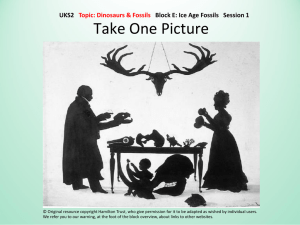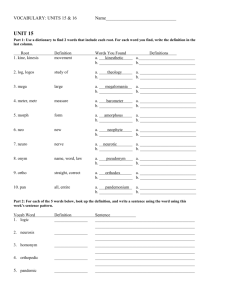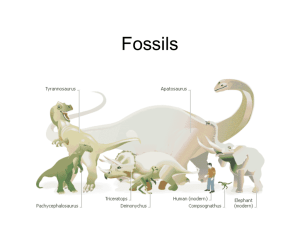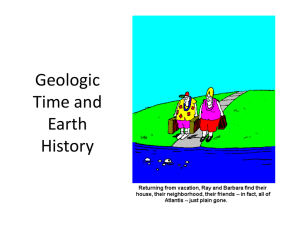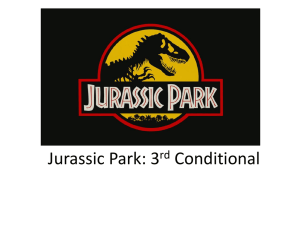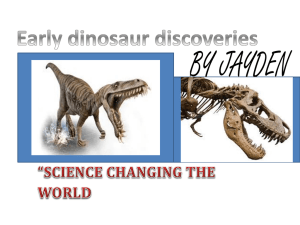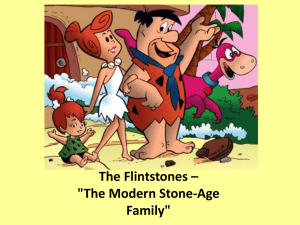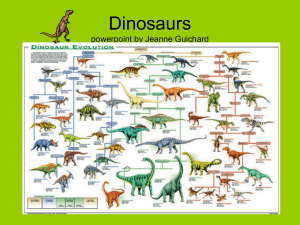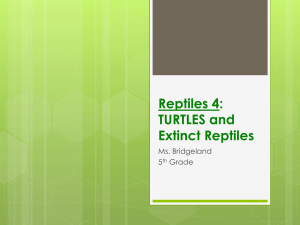Session 02 PowerPoint Resource
advertisement
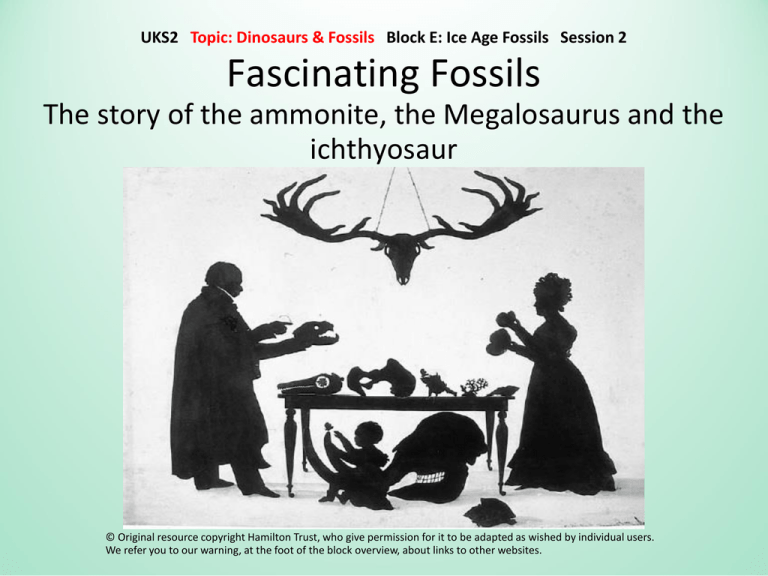
UKS2 Topic: Dinosaurs & Fossils Block E: Ice Age Fossils Session 2 Fascinating Fossils The story of the ammonite, the Megalosaurus and the ichthyosaur © Original resource copyright Hamilton Trust, who give permission for it to be adapted as wished by individual users. We refer you to our warning, at the foot of the block overview, about links to other websites. Ammonites Now we know that ammonites were a sea creature related to squid that lived 220-65 million years ago. When they were first found, they were thought to be magical petrified curled snakes. William Smith William Smith was a farmer's son but he became a surveyor working out where canals could be built. He got to see rocks and fossils being dug up and noticed that there were several different types of ammonite. Strata He noticed that each type of ammonite was always found in only one type of rock. He realised that the ammonites changed over time and the rocks were from different periods, all laid on top of each other. He called them strata. Map of Britain William realised that these strata had folded and eroded over time, so sometimes older rocks were at the surface. He made a map of England, Wales and some of Scotland showing the different layers, and ages, of rock at the surface. Why are ammonites important? They changed over time, so helped people move towards the theory of evolution. They were found with different rocks so helped people to work out which layers of rock were older or younger. There are many of them in many different layers of rock so they show that the earth is very, very old. Megalosaurus Now we know that there were lots of different types of dinosaurs that lived 220-65 million years ago and that Megalosaurus lived about 166 million years ago. Great lizard Fossil Megalosaurus bones were found in Stonesfield Quarry in Oxfordshire. William Buckland got hold of them, and the French scientist Georges Cuvier visited him and thought they were from a giant lizard. Mary's contribution Mary Morland, later Buckland's wife, made detailed drawings of the giant lizard bones, like this one of a jaw and teeth, that he could use in an article. Dinosaurs Buckland did more work and announced Megalosaurus to the world in 1824. After similar ‘giant lizard’ bones were found, Richard Owen, who worked at the British Museum, invented the word ‘dinosaur’ to describe them. Why is Megalosaurus important? It was the first described dinosaur. It helped people realise that there was a whole period of time when animals were very different: the ‘Age of Lizards’. It started the study of dinosaurs as a group of animals. Ichthyosaur Ichthyosaurs are not dinosaurs because they lived in the sea. They lived 248-85 million years ago. Mary Anning They were first found and identified by Mary Anning, a fossil collector and seller from Dorset. Buckland often bought fossils from her. Unfairly, because she was a woman she was not given credit for her finds. Bezoar stones Mary Anning found strange stones in the gut of the ichthyosaur. She called them bezoar stones. William and Mary Buckland did experiments to work out that bezoar stones were actually fossilised ichthyosaur poo! Why are ichthyosaurs important? They showed that there weren't just very different land animals in the past (dinosaurs) but also very different animals in the sea. They were found by a woman. Their fossilised poo (coprolite) was the first to be recognised. Now coprolite is very useful to work out what ancient, extinct animals were eating.
